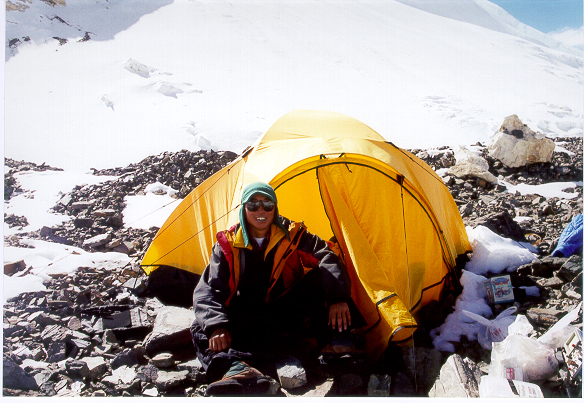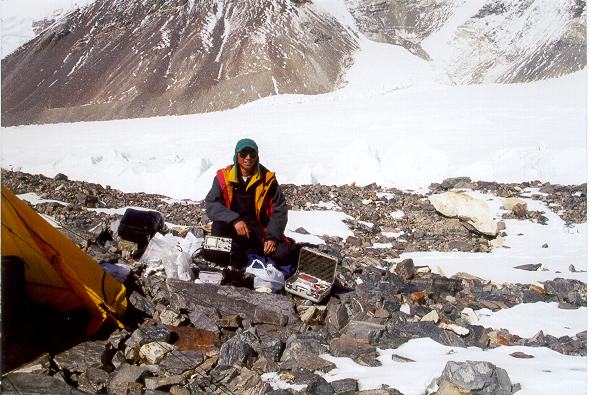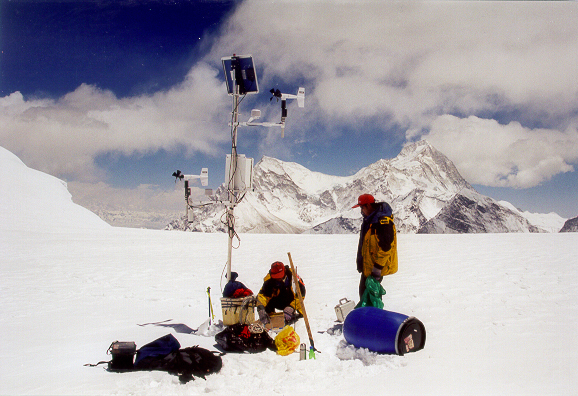Skip navigational links Paleoclimate from Mt. Everest Ice Cores
Principal Investigator: Paul A. Mayewski
Shichang Kang

The glaciers of Mt. Everest contain robust, sub-annual scale records of change in climate and chemistry of the atmosphere extending back in time at least several centuries. In order to retrieve, investigate, and interpret Mt. Everest ice core records we have, over the past five years, maintained a highly successful collaboration with the Cold and Arid Regions Environmental and Engineering Research Institute (CAREERI) of the Chinese Academy of Sciences (CAS). The cooperative activities have included: fresh snow and snowpit sampling, ice coring, GPS surveys, meteorological observations, aerosol sampling, and glacier fluctuation and mass balance studies. Joint Chinese-US field programs have collected ice cores in 1997 (41 meters) and 1998 (80 meters). Records from both ice cores have been calibrated to instrumental series to provide proxies for atmospheric circulation (e.g., South Asian Low and Mongolian High) and both have provided histories of the chemistry of the atmosphere over central Asia. In spring 2001, a 117 meter ice core to bedrock was recovered from the col of the East Rongbuk (ERC) glacier at 6500 m a.s.l., by a joint Chinese-US project (CAS and University of Maine). Together, the three ice cores recovered from this region provide a robust sampling of the north side of Mt. Everest, and can be used to quantify spatial chemical variability and dating accuracy. Based on local accumulation rates and layer thinning estimates, the new 117 meter ERC core likely represents at least several centuries of snow deposition. Thus, we have the opportunity to develop a calibrated, high-resolution paleoclimate record from the new ERC core that will add significantly to previous work on Mt. Everest and Central Asia.


Our recent interests will focus on the new 117 meter ERC core. Primary laboratory analytical emphasis focuses on the production of a detailed (10-15 samples/year over the last 200 years and multi-annual to decadal thereafter) time-series of major ion concentrations (chloride, nitrate, sulfate, calcium, magnesium, sodium, potassium and ammonium), stable isotope ratios (d18O and dD), and total element concentration (iron, aluminum, calcium, and sulfur). These data series will be used to address the following overall project objectives: (1) develop a history of Late Holocene climate variability for the region (e.g., atmospheric circulation, temperature, and precipitation); (2) develop detailed environmental records of, for example, biomass burning, dust storms, anthropogenic pollutants, marine and continental biogenic source productivity.



